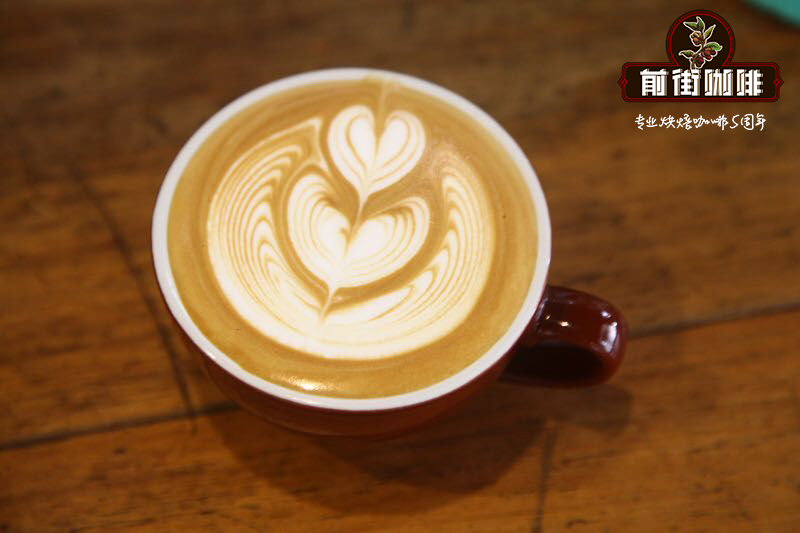The difference between lattes and cappuccinos starts from their origin. What is the meaning of cappuccino?

Professional coffee knowledge exchange more coffee bean information please follow the coffee workshop (Wechat official account cafe_style)
The origin of latte coffee
Caffe' Latte with milk and coffee is Italian, but the drink was not invented by the old sense. The origin of lattes can be traced back to the war between the Ottoman Empire of Turkey and Vienna.
When Mohammed IV's Muslim army besieged Vienna in 1683, the war was urgent. Christians trapped in Vienna decided to ask Poland for help, but they had to find a Turkish-speaking messenger before they could hide it from the Turkish army outside the city. Fanz George Kolschitsky, a Viennese who had done business in Turkey for many years, volunteered to fight. He cheated the enemy in fluent Turkish and swam across the Danube to ask the king of Poland for help. The army of Christ arrived in Vienna and drove the Turks away.
The Turkish army retreated in panic but left behind large quantities of supplies, including gold, cattle, horses and camels, as well as dozens of sacks of coffee beans. At that time, the Viennese did not know what the coffee in the sack was and thought it was feed for livestock, so no one paid any attention to the inconspicuous coffee beans, but Kochsky moved all the coffee beans because he had lived in Turkey and knew how to make a lot of money from coffee beans.
So he opened a Blue bottle Cafe (Blue Bottle). At first he made coffee in exactly the unfiltered way of the Turks, but Viennese were not used to drinking Turkish coffee with coffee powder and thick charred coffee. Kochsky had an idea to filter out the coffee grounds with cloth and add milk and honey to become a new refreshing drink that was very popular among Viennese. It was also the first time that milk was combined with coffee, around the end of the 17th century to the beginning of the 18th century. At that time, technology was not enough to invent high-pressure steam foam equipment, but Kochisky's idea of coffee with milk also gave coffee a more expensive way to drink, making it the ancestor of today's Caffe' Latte.
The Blue bottle Cafe has also become the most classic coffee shop in Europe, with many painters using it as a painting genre. Vienna also treasures a number of pictures of the painter Kochsky entertaining guests, which shows how popular the Blue bottle Cafe was at that time.
The origin of Cappuccino. Both drinks are made from coffee and milk, but cappuccino has a more knowledgeable origin and has always been the best material for the study of character changes in Europe and the United States.
The history of the word Cappuccino is enough to show that a word is often extended to other meanings because it looks like something, far beyond the original intention of the creator. It sounds complicated. Take a look at the following analysis.
The monks of the St. Franciscan Church (Capuchin), founded after 1525, all wore brown robes and pointed hats. When the St. Franciscan Church spread to Italy, the locals thought that the monks' clothes were very special, so they gave them the name Cappuccino. The Italian word refers to the loose robes and small pointed hats worn by monks, derived from the Italian word "headscarf" or Cappuccio.
However, Lao Yi loved coffee and found that when espresso, milk and milk foam were mixed, the color was like the dark brown robe worn by monks, so he came up with a drink with coffee and sharp milk bubbles, which was named Cappuccino. The word was first used in English in 1948, when a report in San Francisco first introduced cappuccino beverages, and it was not until 1990 that it became a familiar coffee drink. It should be possible to say that the word Cappuccino coffee comes from the St. Franciscan Church (Capuchin) and the Italian headscarf (Cappucio). It is believed that the original word makers of Cappuccino never dreamed that the monks' robes would eventually become the name of a coffee drink.
Cappuccino is also related to the name of a monkey.
It's not over yet. There is a small monkey in Africa with a black cone-shaped hair on its head, much like a pointed hat on a St. Franciscan robe, hence the name Capuchin, which was first used by the British in 1785. The word Capuchin has generated coffee drink names and monkey names hundreds of years later, which has always been an interesting story for literati.
Dry cappuccino and wet cappuccino
Did you know that cappuccinos can be dry or wet? The so-called dry cappuccino (Dry Cappuccino) refers to the conditioning method with more milk bubbles and less milk. it tastes stronger than milk and is suitable for people with heavy taste. When it comes to wet cappuccino (Wet Cappuccino), it refers to the practice of fewer milk bubbles and more milk, with milk fragrance overshadowing the thick coffee flavor, which is suitable for those with light taste. The flavor of the wet cappuccino is similar to that of the popular latte.
Generally speaking, the taste of cappuccino is heavier than latte. If you have a heavy taste, you might as well order cappuccino or dry cappuccino. If you are not used to the heavy smell of coffee, you can order latte or wet cappuccino.
Important Notice :
前街咖啡 FrontStreet Coffee has moved to new addredd:
FrontStreet Coffee Address: 315,Donghua East Road,GuangZhou
Tel:020 38364473
- Prev

The difference between latte and cappuccino latte practice and cappuccino practice
Professional coffee knowledge exchange More coffee bean information Please pay attention to coffee workshop (Weixin Official Accounts cafe_style) Latte coffee latte coffee is a classic mixture of Italian espresso and milk, Italians also like latte as a breakfast drink. In Italian kitchens in the morning coffee and milk are usually brewed simultaneously on a sunny stove. Latte is big.
- Next

The characteristics of cappuccino 6 poet cappuccino lyrics cappuccino song cappuccino sadness
Professional coffee knowledge exchange more coffee bean information please follow the coffee workshop (Wechat official account cafe_style) there are many cafes, but pick up the coffee menu, how to choose a dazzling variety of lattes, cappuccinos, mochas and Maggiados? What kind of coffee do you like? Look at the picture above and it will be clear! a. Cappuccino Capp
Related
- Beginners will see the "Coffee pull flower" guide!
- What is the difference between ice blog purified milk and ordinary milk coffee?
- Why is the Philippines the largest producer of crops in Liberia?
- For coffee extraction, should the fine powder be retained?
- How does extracted espresso fill pressed powder? How much strength does it take to press the powder?
- How to make jasmine cold extract coffee? Is the jasmine + latte good?
- Will this little toy really make the coffee taste better? How does Lily Drip affect coffee extraction?
- Will the action of slapping the filter cup also affect coffee extraction?
- What's the difference between powder-to-water ratio and powder-to-liquid ratio?
- What is the Ethiopian local species? What does it have to do with Heirloom native species?

